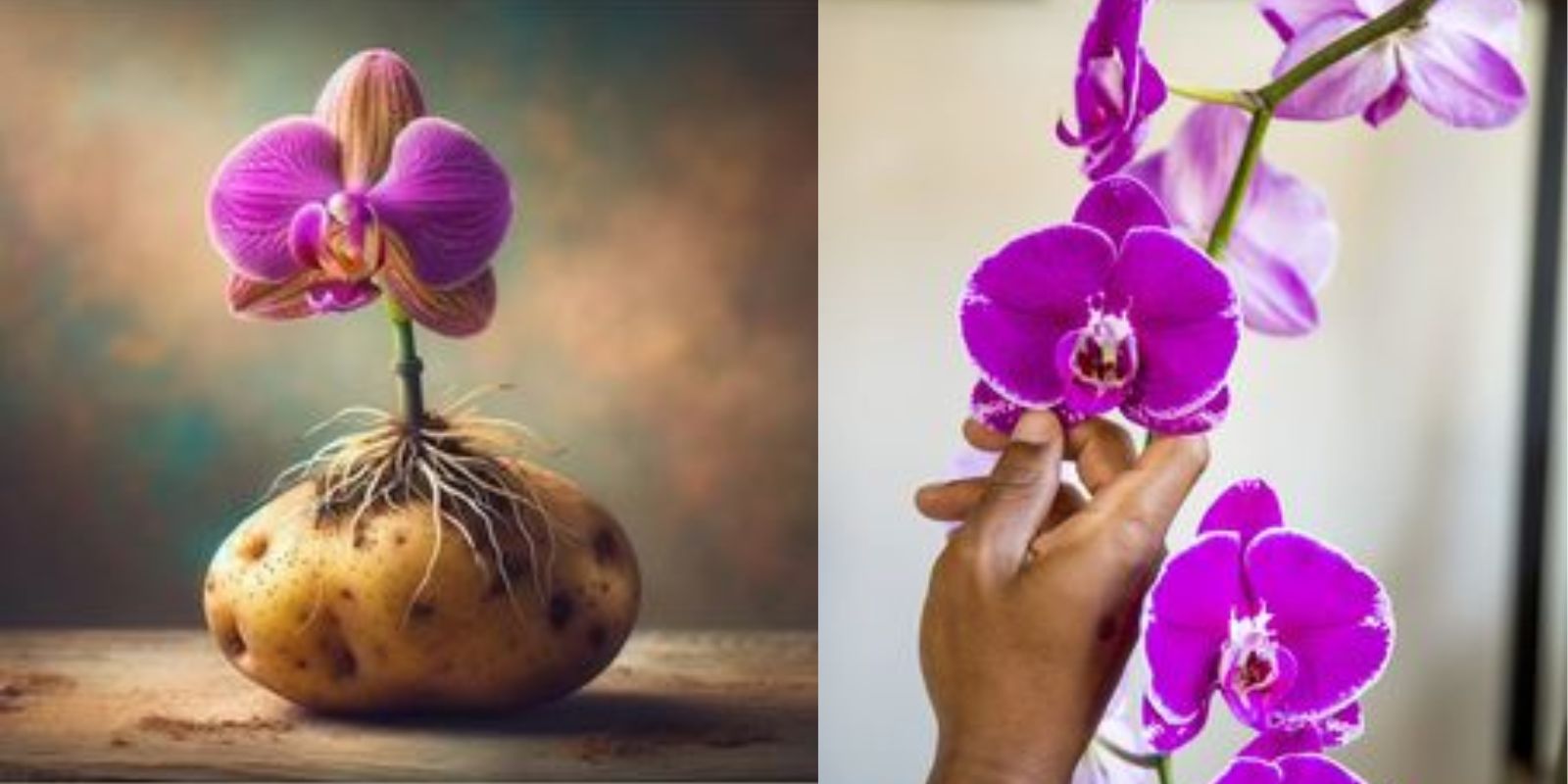Orchids are renowned for their delicate beauty and diverse species, making them prized additions to any indoor garden. While propagating orchids traditionally involves careful division of rhizomes or keikis, there exists a lesser-known yet effective method using a humble potato. This innovative gardening technique harnesses the potato’s natural properties to provide nutrients and moisture, facilitating the growth of new orchid plants from existing nodes or pseudobulbs. In this article, we’ll explore the step-by-step process of propagating orchids with a potato, understand the science behind this method, discuss practical tips for success, and delve into the benefits of incorporating sustainable gardening practices into your orchid care routine.
Understanding the “One Potato” Method: A Brief Overview
The concept of using potatoes to propagate orchids revolves around the potato’s ability to retain moisture and provide a stable environment for orchid nodes or pseudobulbs to develop roots. Potatoes are rich in starches and nutrients that can sustain initial growth stages of orchids, similar to how they support sprouting seeds or root cuttings in other plants. This method is particularly useful for orchids that produce keikis (baby plants) or have pseudobulbs that can be separated and rooted independently.
Steps to Propagating Orchids with Just One Potato:
- Selecting Suitable Orchids and Potatoes:
Begin by choosing a healthy orchid plant with mature pseudobulbs or nodes suitable for propagation. Select a fresh potato that is firm and free from any sprouts or signs of decay. The potato variety isn’t critical, but it should be large enough to accommodate the orchid node or pseudobulb. - Preparing the Potato:
Cut the potato into small cubes or slices, ensuring each piece has a flat surface where the orchid node or pseudobulb can be securely placed. The cut surface of the potato will provide a moist, nutrient-rich environment conducive to root growth. - Inserting the Orchid Node or Pseudobulb:
Gently press the orchid node or pseudobulb into the cut surface of the potato. Ensure that the node or pseudobulb makes good contact with the potato to facilitate the transfer of moisture and nutrients. - Securing and Potting:
Use a toothpick or small stake to secure the orchid and potato combination upright in a pot or container filled with orchid potting mix. The potting mix should be well-draining to prevent waterlogged conditions. - Providing Optimal Growing Conditions:
Place the potted orchid in a warm, humid location with indirect light. Maintain consistent moisture levels in the potting mix, keeping it damp but not overly wet. Avoid direct sunlight, which can scorch the orchid leaves. - Monitoring Growth and Root Development:
Regularly check the orchid for signs of new root growth emerging from the node or pseudobulb. This indicates that the propagation process is successful, and the orchid is establishing itself in its new environment. - Transplanting and Care:
Once roots are well-established, carefully transplant the orchid with the potato into a larger pot or directly into the ground, depending on the orchid species and local climate conditions. Continue to provide appropriate orchid care, including regular watering, fertilizing with orchid-specific nutrients, and maintaining optimal light levels.
Understanding the Science Behind the “One Potato” Method:
The effectiveness of the “One Potato” method lies in the potato’s ability to release moisture and nutrients gradually, creating a favorable microclimate for root initiation and development. As the orchid node or pseudobulb establishes roots within the potato, it draws essential nutrients to support its growth. This method mimics natural conditions where orchids often establish themselves on trees or organic matter in their native habitats.
Benefits of Using the “One Potato” Method:
- Cost-Effective Propagation: Potatoes are readily available and inexpensive, making this method a cost-effective way to propagate orchids compared to purchasing new plants or specialized propagation materials.
- Sustainable Gardening Practice: By repurposing a household item like a potato for orchid propagation, gardeners can embrace sustainable gardening practices that minimize waste and environmental impact.
- Expand Orchid Collection: Successfully propagated orchids can be used to expand your orchid collection, share with friends and family, or even trade with other orchid enthusiasts.
- Educational Experience: Implementing innovative propagation techniques like the “One Potato” method provides a hands-on learning opportunity about plant biology, nutrient uptake, and sustainable gardening practices.
Tips for Success with Orchid Propagation:
- Choose Healthy Orchids: Select orchid plants that are robust and free from pests or diseases for optimal propagation success.
- Monitor Moisture Levels: Maintain consistent moisture levels in the potting mix while avoiding waterlogged conditions, which can lead to root rot.
- Patience and Observation: Orchids are known for their slow growth, so be patient and allow sufficient time for roots to develop before transplanting.
Conclusion: Embracing Innovation in Orchid Propagation
The “One Potato” method represents an innovative approach to propagating orchids that combines practicality with sustainability. By understanding the science behind how potatoes can support orchid growth and following the steps outlined in this article, gardeners can enhance their orchid cultivation skills while enjoying the beauty and diversity of these captivating plants. Whether you’re a novice orchid enthusiast or an experienced gardener seeking new propagation techniques, exploring the “One Potato” method offers a rewarding journey of discovery in the world of orchid care. Let’s continue to nurture and propagate orchids sustainably, one potato at a time!

